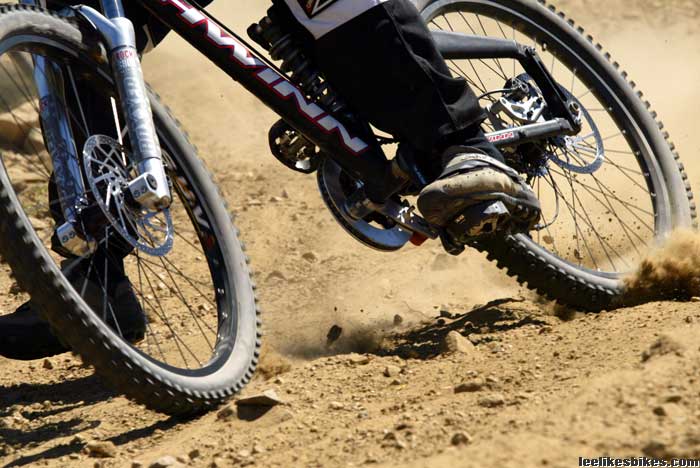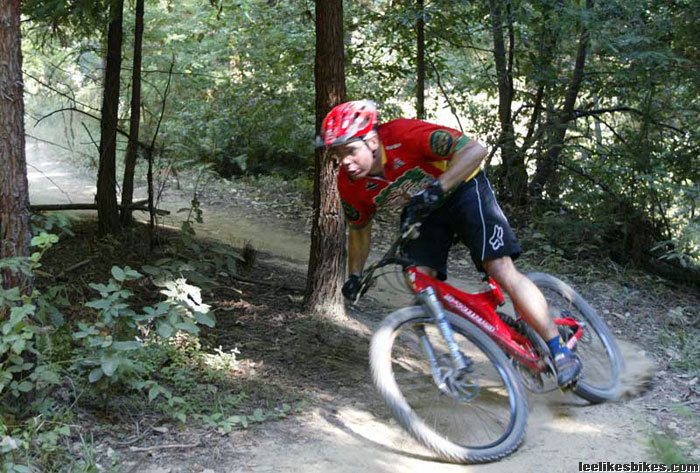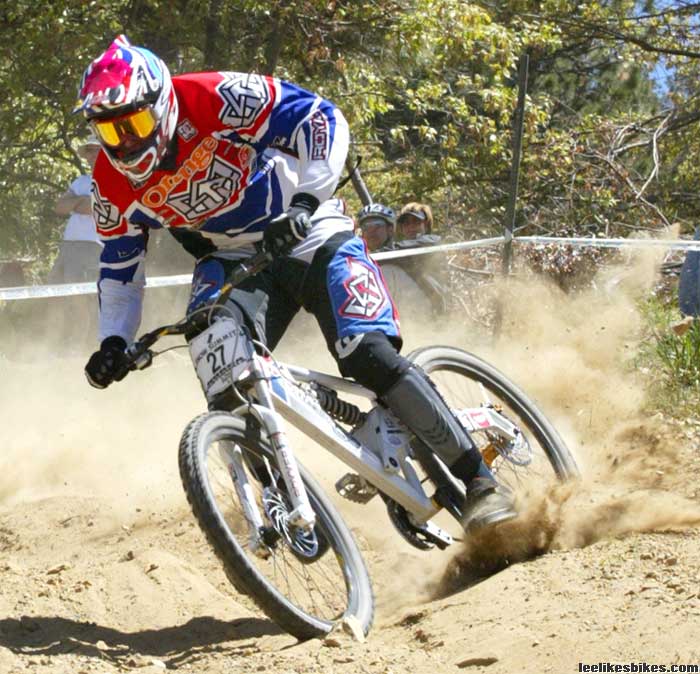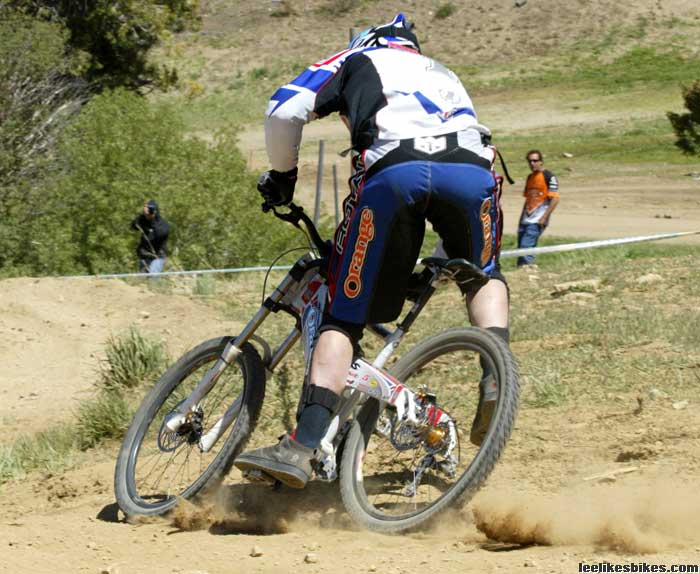Drifting: rear-wheel vs. two-wheel

This reader is rear-wheel drifting all over the place, and he wants to know what his front wheel is doing. He’s also wondering about two-wheel drifts.
Lee,
I ride at a level where I’m comfortable in a whole-of-corner sustained rear-wheel drift and am working on two-wheel drifts, but my questions are about rear-wheel drifts in particular and it is more of a “why” than a “how.”
When driving a car that is oversteering, I have to use a little opposite lock to sustain the drift around the corner. While I’m sustaining a rear-wheel drift on my bike, does my front wheel also have a little ‘opposite lock’ to it too? I’ve never looked, of course. If this is true then I must be using ‘opposite lock’ unconsciously, but can I use it at a conscious level in order to artificially create or sustain a rear-wheel drift? Or, is there no ‘opposite-lock’ at all, my front wheel is merely pointing in the direction I am going and it is only ‘opposite’ in relation to the rest of the bike (like the front wheels of my rear-wheel drifting car)? Is there a difference in where the front wheel points between a rear- and a two-wheel-drift?
I suspect the two-wheel drift has a straighter front wheel. Please note that I don’t want to stop the rear-wheel drift, I just want to play around with it ’cause it’s fun.
Cheers, Chris
Hey Chris,
This question made my day. Thanks.
Rear wheel drift
Definition: Your rear wheel has broken loose, but your front wheel is tracking. Brakes are not involved. Skidding the rear tire is a different animal.
Application: This is a good way to change direction, especially at high speed on loose ground. Very useful in downhill and trail riding.
Technique: Load the front end to keep the front tire glued. Let the rear end do what it wants. There is some “opposite lock” — while your bike swings outward, your front wheel is points where you want to go. It feels like you’re steering opposite the turn, but you’re steering into the turn; the rest of your bike is following a tangent. As Steve Peat told me, “As long as your front wheel is tracking, you’re golden.” He probably said Mate in there somewhere too.
The rear-wheel drift is actually secondary to keeping your front tire planted. You only have so much weight to press into your tires. The more you load your front tire, the lighter your rear tire, and the more likely it’ll break loose.
Notes: A cutty is an aggressive rear wheel drift. If you watch fast riders, you’ll see a lot of cutties, aka intentional rear-wheel drifts. If you want to see even more of this action, watch moto.
 Rear wheel drifting, front wheel tracking. Check out the steering angle. He’s steering outside the bike, but into the turn. |
Two wheel drift
Definition: Your speed/setup/technique have outstripped the available traction, and both wheels have broken loose. Brakes are not involved.
Application: I can’t think of a reason to do this on purpose, other than for fun. But being comfortable in a drift lets you corner faster, and it keeps you calm when you’re super pinned and things get tangential.
Technique: Once you enter the turn, stay balanced in the middle of your bike. If you’re properly positioned, both wheels will release together, and the drift will feel very mellow and controllable. (You don’t want your front end letting go first!) Your front and rear wheels should keep pointing in their “normal” directions. If all goes well, you’ll drift until you regain traction, then you’ll be on your way — pinned!
Notes: While you won’t see top riders breaking both tires loose on purpose, they all two-wheel drift as a function of speed. As long as you’re balanced, two-wheel drifts are all good — and they let you carry more speed than traction allows.
So cool!
— Lee
 Me in October 2003, back when I was first learning about these things. This turned out to be perfect rear-wheel drift. You can tell I was shocked! |



Comments are closed.